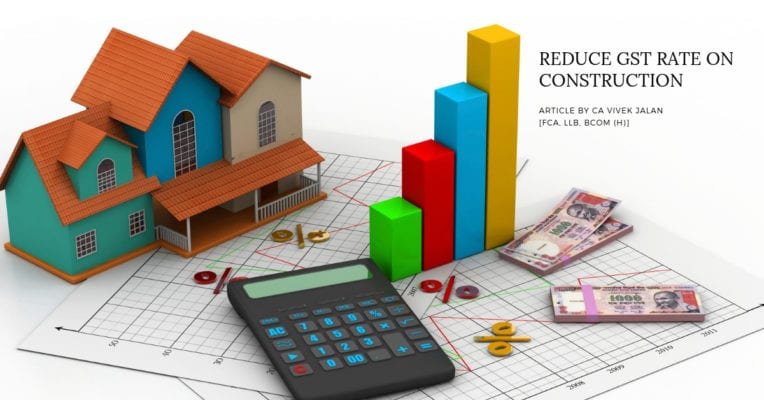Reduce GST Rate on Construction of On-going Residential projects from 1st April 2019 – As a builder, how to decide?

GST continues to test the businesses of their resilience of unlearning, updating and redoing. This time it has tested the builders.

GST on construction service relating to residential and related commercial apartments has gone through a sea change. From 1st April 2019, the effective GST rate is reduced to 1% from 8% for affordable category houses and to 5% from 12% for non-affordable category houses. However the reduced rate of output Tax has come with conditions that No ITC would be available to the Builders, 80% of the project-wise purchases (barring few items like diesel, electricity, grant of development rights, etc) by the builder would mandatorily be required to be made from registered vendors, Cement should be purchased only from registered vendors, etc.
For a project that has commenced operations on or after 1st April 2019, the new scheme is mandatory where construction services are provided along with transfer of land. For pure construction services, the existing rate of 18% would continue to apply. Further, in the case of Pure Commercial Projects, there would also not be any change in the GST Rates.
However, for ongoing residential projects, the builders have an option to choose (Before 20th May 2019) either the new scheme or continue charging the old rates of GST. This decision would have a huge impact on the cost structure and future sales of the promoter. If he opts for the new scheme of 1%/5%, the promoter needs to reverse the credit pertaining to un-booked flats and instalments not due, pertaining to flats booked as on 31st March 2019. However, If he opts for the old scheme of 8%/12%, no commercial impact is there in case the promoter would be able to collect 8%/12% from customers. Also under the old scheme, the credit will be available on purchase and it will reduce the costs to some extent. It is also to be noted that the promoter of projects covered under RERA (Real Estate Regulations Act) may not be able to revise the price for the booked flats also. Hence the following may affect the decision making in case of a Builder –
- If the price of the flat quoted to the customer is inclusive of taxes, then the new scheme may be beneficial for the builder. However, if the price quoted to the customer is exclusive of taxes, then the old scheme may be better for the builder.
- If the project is almost completed i.e. 80%-90%, then it may be beneficial for the builder if he could pay GST under the existing scheme. In this case, a majority of inputs or input services would have been procured and credit on such procurements would have been availed. However, if the project is in the initial stages of construction where a major part of inputs or input services is not procured, then it may be beneficial for the builder to opt for a new scheme.
- If the project is at premium places wherein the essential cost component is due to the premium value of land and construction cost and corresponding credit is not substantial, it may be ideal to go for a new scheme.
- In case the expected flats to be sold before receipt of Completion Certificate is not many then the New Scheme could be chosen. This is because in such cases, even in the existing scheme, the credit attributable to unsold flats has to be paid back.
The decision should be made on a detailed analysis of figures on different aspects and also the qualitative aspects as to market conditions, customer relationship, clauses in the agreement, etc may be seen.
As for consumers, the new scheme looks to be a booster if all the costs are not passed on by builders to the customers by the increase in rates.
(The article has been contributed by CA Vivek Jalan who is the Co-Chairman of the Indirect Tax Committee of Bengal Chamber Of Commerce.)








